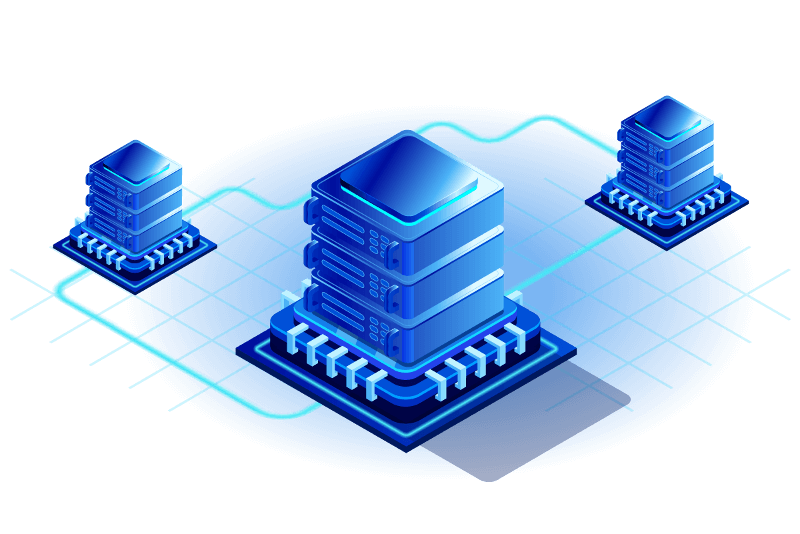Non-Volatile Memory Express (NVMe) storage represents a significant leap forward in data storage technology, offering unparalleled performance, low latency, and improved efficiency over traditional storage interfaces. Understanding NVMe involves delving into its architecture, benefits, applications, and how it compares to other storage solutions.
NVMe Architecture and Technology
NVMe is an interface protocol designed specifically for high-speed communication with non-volatile memory, such as flash storage, through the PCI Express (PCIe) bus. Traditional storage interfaces, like Serial ATA (SATA) and Serial Attached SCSI (SAS), were originally designed for spinning hard disk drives (HDDs) and thus have inherent limitations when used with modern solid-state drives (SSDs).
- Protocol Design: NVMe was built from the ground up to leverage the low latency and parallelism of flash storage. It supports multiple I/O queues (up to 64,000), each capable of handling up to 64,000 commands, compared to the single queue of 32 commands in SATA. This allows NVMe to handle vastly more simultaneous operations, reducing bottlenecks and improving performance.
- PCIe Interface: NVMe drives connect directly to the CPU via the PCIe bus, offering higher bandwidth and lower latency compared to the SATA interface. PCIe lanes are used for data transfer, with each lane providing a raw data rate of up to 1 GB/s in PCIe 3.0, with even higher rates in PCIe 4.0 and 5.0.

Advantages of NVMe Storage
- Performance: The most significant advantage of NVMe over SATA or SAS is performance. NVMe SSDs can deliver read and write speeds several times higher than those of SATA SSDs. This is crucial for applications that require rapid data access and high throughput, such as video editing, gaming, and large-scale databases.
- Low Latency: NVMe’s architecture is optimized for low latency, reducing the time it takes for data to travel between the storage device and the CPU. This is particularly beneficial for real-time applications and workloads that demand quick data retrieval and processing.
- Efficiency: NVMe drives consume less power relative to their performance output compared to traditional storage solutions. This efficiency is partly due to the streamlined protocol and direct connection to the CPU via PCIe.
- Scalability: The ability to handle numerous parallel queues and commands makes NVMe highly scalable. As data demands grow, NVMe storage can accommodate increased workloads without a corresponding decrease in performance.
Applications of NVMe Storage
- Data Centers and Enterprise Solutions: NVMe storage is widely used in data centers due to its high performance and scalability. It is ideal for environments requiring heavy I/O operations, such as cloud computing, virtualization, and big data analytics.
- Consumer Electronics: NVMe is increasingly found in consumer devices, including laptops, desktops, and gaming consoles. Its speed and efficiency enhance overall system performance, boot times, and application load times.
- High-Performance Computing (HPC): HPC applications benefit from NVMe’s ability to handle large datasets quickly, making it suitable for scientific research, simulations, and complex computations.
- Media and Entertainment: NVMe’s high throughput and low latency are essential for video production, graphic design, and other multimedia applications that involve large file transfers and real-time processing.
Comparison with Other Storage Technologies
- SATA SSDs: While SATA SSDs have significantly improved over traditional HDDs, they are limited by the SATA interface, which maxes out at 6 Gb/s. NVMe SSDs, using the PCIe interface, far exceed this limit, offering much higher speeds and better performance for intensive workloads.
- SAS SSDs: SAS SSDs provide better performance and reliability than SATA, especially in enterprise environments, but they still do not match the speed and efficiency of NVMe. SAS is also more complex and expensive compared to NVMe.
- HDDs: Traditional HDDs, while offering higher storage capacities at a lower cost per gigabyte, cannot compete with the speed and performance of NVMe SSDs. HDDs are suitable for archival storage and less performance-critical applications.
Future of NVMe Storage
The adoption of NVMe is poised to grow as the demand for high-speed, low-latency storage solutions increases. With advancements in PCIe technology (moving towards PCIe 5.0 and beyond), NVMe storage will continue to offer even higher performance. Additionally, emerging technologies like NVMe over Fabrics (NVMe-oF) extend NVMe’s benefits over networked environments, further broadening its applications in distributed storage systems and cloud infrastructures.
In summary, NVMe storage is a transformative technology that addresses the limitations of older storage interfaces, providing exceptional performance, efficiency, and scalability for a wide range of applications. Its continued evolution and adoption will likely drive significant advancements in both consumer and enterprise computing environments.
